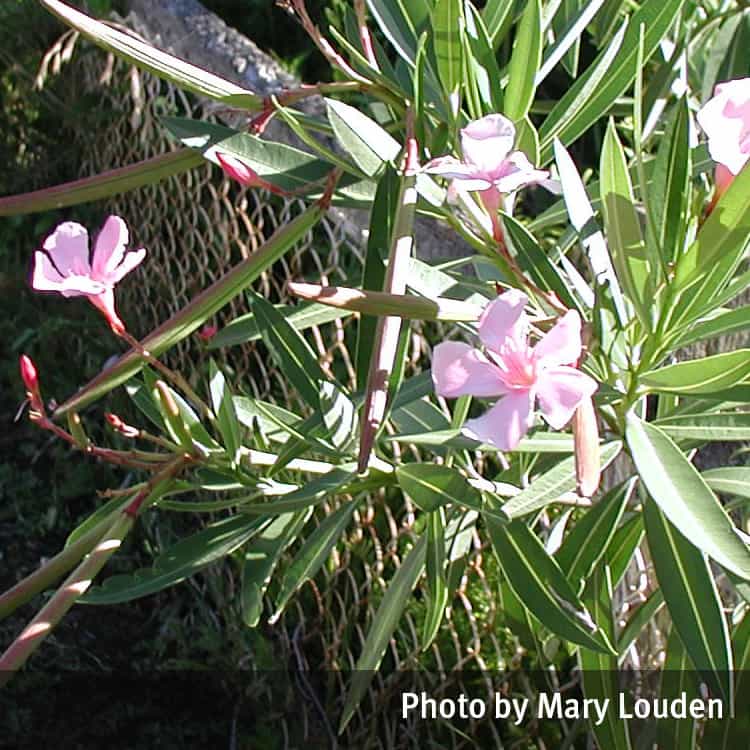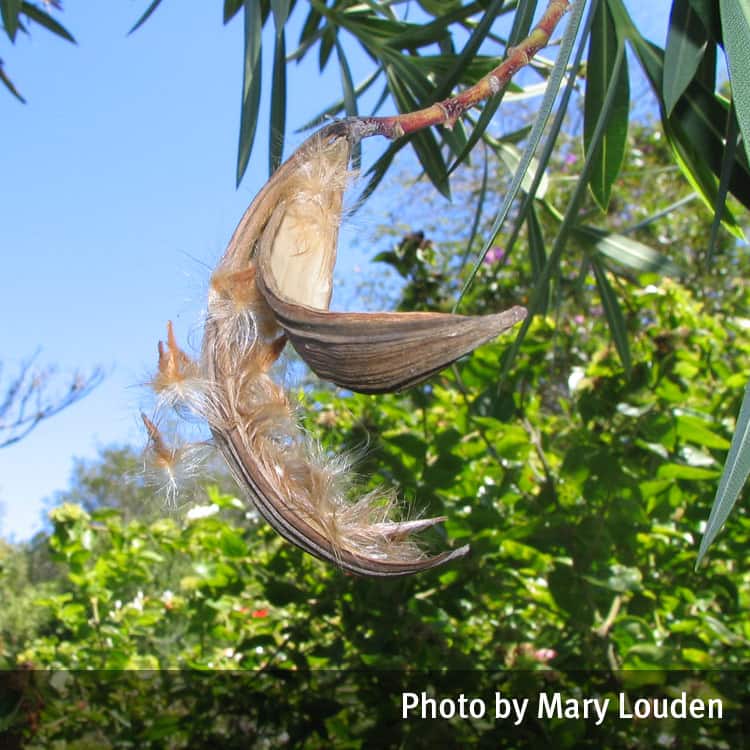For all ingestions seek urgent medical assistance.
Description
An ornamental shrub to 4m, often with many slender stems from the ground. Dwarf, double-flowered and variegated varieties are now popular.
The perfumed flowers are pink, red, white or apricot, 4–5cm across with five spreading petals, and are usually clustered at the end of the branches.
The leaves are lance-shaped, leathery and stiffly pointed, 7.5–20cm long and 1.3–2cm wide, arranged in groups of two or three along the branch.
Toxicity
Symptoms
All parts of this plant are toxic and deaths have been reported from significant ingestions. Symptoms may include nausea, vomiting, abdominal pain, lethargy and dizziness. Delayed effects include slow heart beat, seizures and coma. The flower perfume may cause respiratory irritation and skin contact with the sap may cause dermatitis in sensitive individuals.
Images


Details
Common name: Pink oleander
Botanical name: Nerium oleander.
Other common names: Oleander, Oleander rose laurel, White oleander
Family: Apocynaceae
General description: An ornamental shrub to 4m, often with many slender stems from the ground. Dwarf, double-flowered and variegated varieties are now popular.
Flowers: The perfumed flowers are pink, red, white or apricot, 4–5cm across with five spreading petals, and are usually clustered at the end of the branches.
Leaves: The leaves are lance-shaped, leathery and stiffly pointed, 7.5–20cm long and 1.3–2cm wide, arranged in groups of two or three along the branch.
Fruit/Berries: The fruit are long narrow pods containing numerous silky hairy seeds.
Other: The sap is milky.
Last updated: July 2023